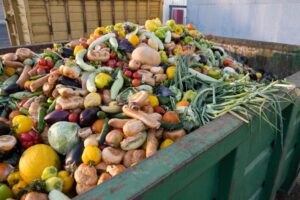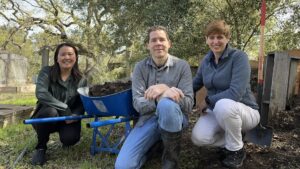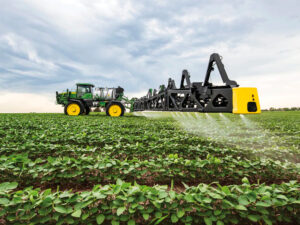There’s a lot of debate about the best way to improve our food system. But when it comes to food waste, most stakeholders seem to agree that it’s a real problem.
Food loss and waste cost roughly $1 trillion in losses around the world each year. The pandemic has only enhanced the need for more supply chain resiliency, and for us to make the most of the food that is being produced, disseminated, and purchased throughout the world.
Protection and preservation technologies will be a key part of solving the food waste puzzle, market research firm Lux Research suggests in a new report. It highlights best-in-class protection and preservation tech across six key segments of the agrifood value chain, including upstream and downstream.
The analysis looked at patents, academic papers, VC and government funding figures, and its own data. Read on to learn about the technologies best positioned to fight food waste at each point in the supply chain, and the startups behind them.
Pre-harvest, post-harvest, and storage
At the farm level, the report identifies a need for synthetic pesticides, coatings, biopesticides and pre-harvest fungicides as being in great need. For post-harvest and storage, it highlights post-harvest fungicides, ethylene scavengers, post-harvest coatings, and post-harvest storage.
US-based Clean Crop Technologies, for example, is developing an environmentally-friendly treatment for post-harvest crops that can safely kill molds and toxins, ensuring that foods last longer and are safer for consumers. Switzerland’s AgroSustain is developing both pre- and post-harvest biological treatments to prevent mold from attacking crops.
The storage segment is home to a number of startups with tools aimed at extending storage life. Philadelphia,US-based Strella Biotechnology combines novel biosensors with actionable insights to maximize freshness and reduce spoilage of fruit. Celebrity VC Mark Cuban is an investor along with Yamaha Motor Ventures.
Last year, the UK’s Wheatsheaf acquired Purefresh’s ozone technology, which helps reduce food waste due to shipping container storage. Maersk Growth — the venture arm of the world’s largest transporter of food — has been an active investor in food waste tech, backing grain monitoring tech Telesense and food blockchain startup Ripe.io among others.
Processing
The report concludes that during the food processing phase, synthetic preservatives, natural preservatives, thermal processing, and alternate processing technologies all have key roles to play in reducing food waste.
With what it describes as the most powerful dehydration technology in the world, California’s Treasure8 is tackling dehydrated whole foods, hemp drying and waste extractions, plant-based proteins, nutraceuticals, and bioplastics. It describes its main product — a suite of drying and processing solutions — as ‘DaaS’ (drying-as-a-service.)
Packaging
Packaging has been one of the most widely discussed areas of innovation in foodtech and beyond. Active packaging, smart packaging, and modified atmosphere processing are some of the most promising technologies in this area, according to the Lux Research report. Plenty of startups are innovating different packaging solutions, from Loliware and Evoware’s edible ‘plastics’ to ItemMaster‘s smart packaging.
Chicago-based Hazel Technologies has developed a package insert that releases vapors that can triple shelf life, while Apeel Science’s edible, shelf-extending produce coating recently attracted investment from Oprah Winfrey and Katy Perry [disclosure: Apeel Sciences is an investee of AgFunder, which is the parent company of AFN.] Washington state’s StixFresh has developed a spoilage-slowing sticker that can be attached to produce to extend shelf life.
Distribution and retail
At the distribution and retail level, cold chain monitoring, food retail supply chain management, refrigeration, and additional packaging solutions are showing particular promise. London-based Winnow has developed a smart kitchen tool to help restaurants more accurately measure food waste and optimize their ingredient orders from suppliers. Boston’s Spoiler Alert offers a software system and professional services to help food businesses manage unsold inventory. AgShift, which can be deployed at multiple supply chain points, applies deep learning to the inspection of fruit through an app. After photographing strawberries, for example, the AgShift app can tell the user how much shelf life remains based on analysis of the color of the fruit.
Maersk has also made investments in startups tackling the distribution segment like real-time data aggregator Sensor Transport and digital freight broker LoadSmart.
Post-retail and in-home
Finally, at the point-of-sale and in-home levels, smart packaging and sensing technologies continue to be important. Smart appliances and storage innovations that help food last longer, or help consumers understand when their food may be approaching expiration, are also key.
Israeli startup Wasteless has developed a proprietary dynamic pricing algorithm for products with a limited expiration date. It allows retailers to fix and display discount prices across the demand curve and to discount items that are nearing expiration. Singapore’s Flavorgator helps restaurants identify which dishes are the least popular.
More investment is needed in food waste tech
Although these technologies offer a promising way to mitigate food waste, the report also identifies emerging technologies that need investment now if we are to take full advantage of the benefits they offer. These include novel natural preservatives, edible coatings, and active packaging technologies.
When it comes to the future of food waste technologies, bio-based coatings for crops, antimicrobials in active packaging, and digital tools to optimize supply chain management will likely become more common in the next three years, Lux Research suggests. And while smart appliances will continue to show appeal, point-of-use sensing is positioned to gain the most traction.
Beyond the technologies that the report identifies, a number of startups are coming into the space with fresh ideas. Ambrosia makes a household cleaning product from food waste, for example, while Full Harvest operates a B2B marketplace connecting food producers with food buyers to prevent surplus crops from being wasted. Yume offers a wholesale marketplace for surplus food in Australia while US-based WISErg has developed a food waste-to-fertilizer technology.

















Sponsored
International Fresh Produce Association launches year 3 of its produce accelerator